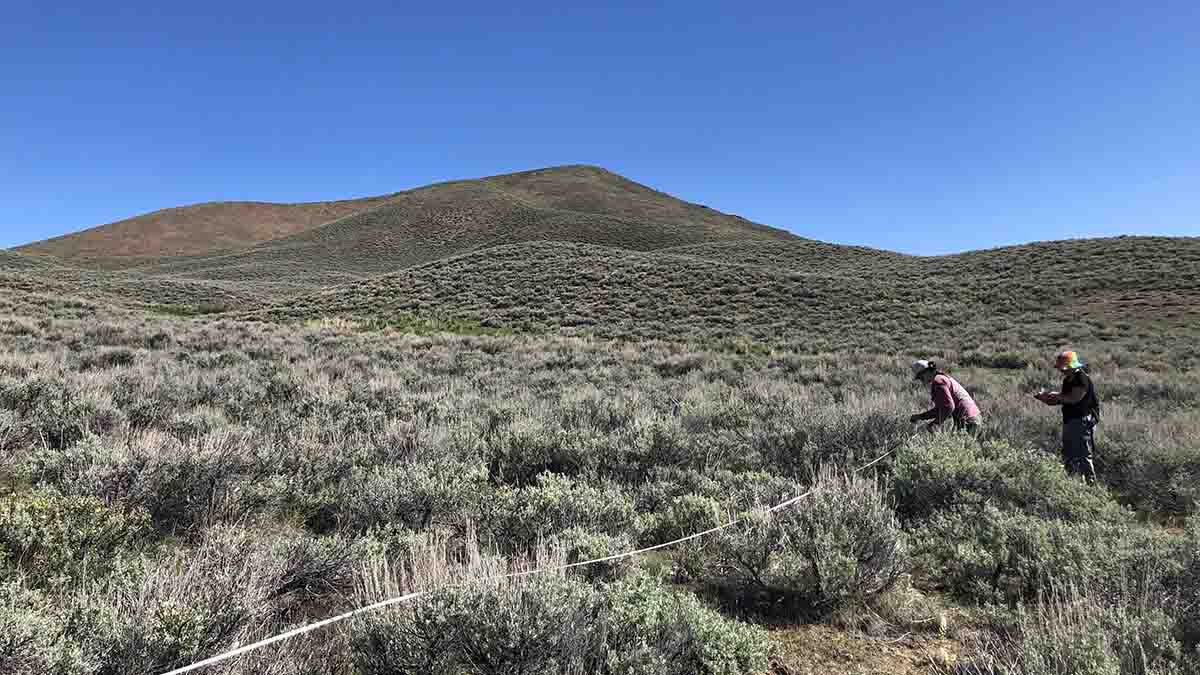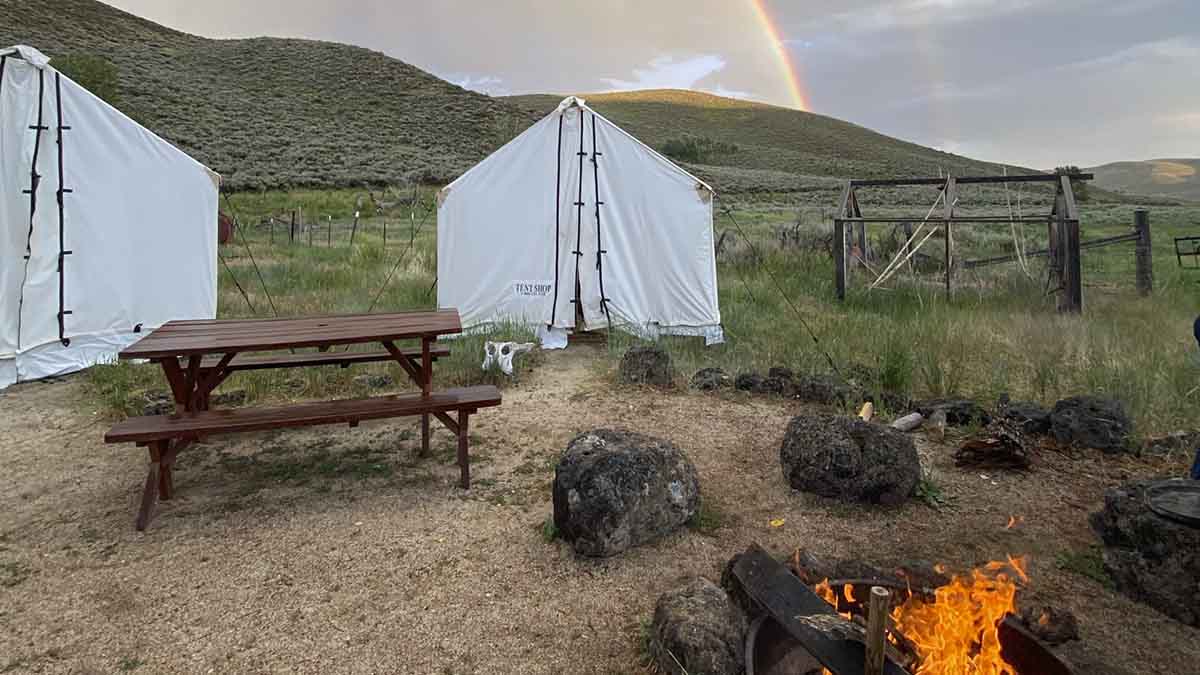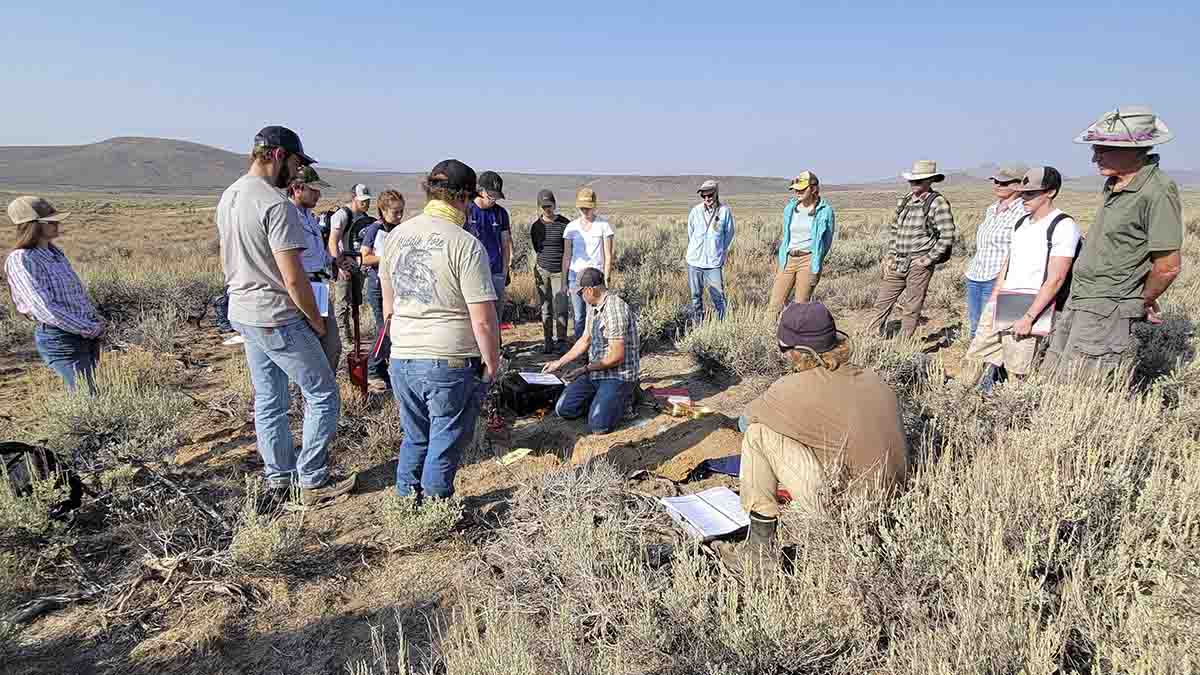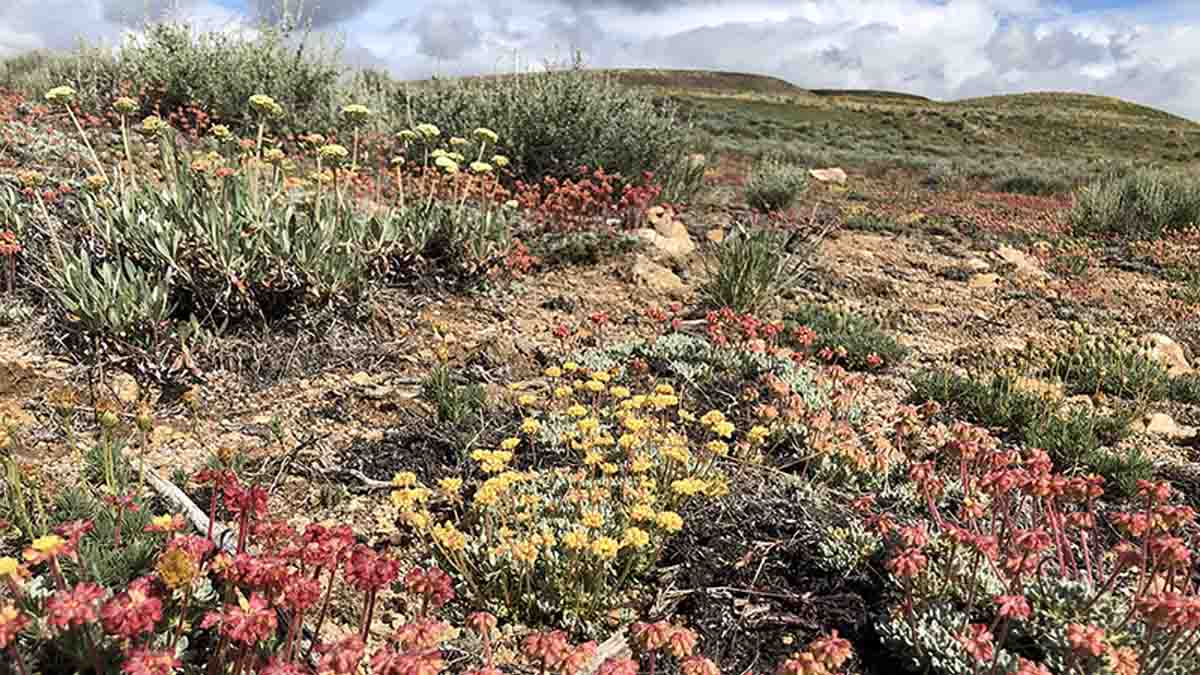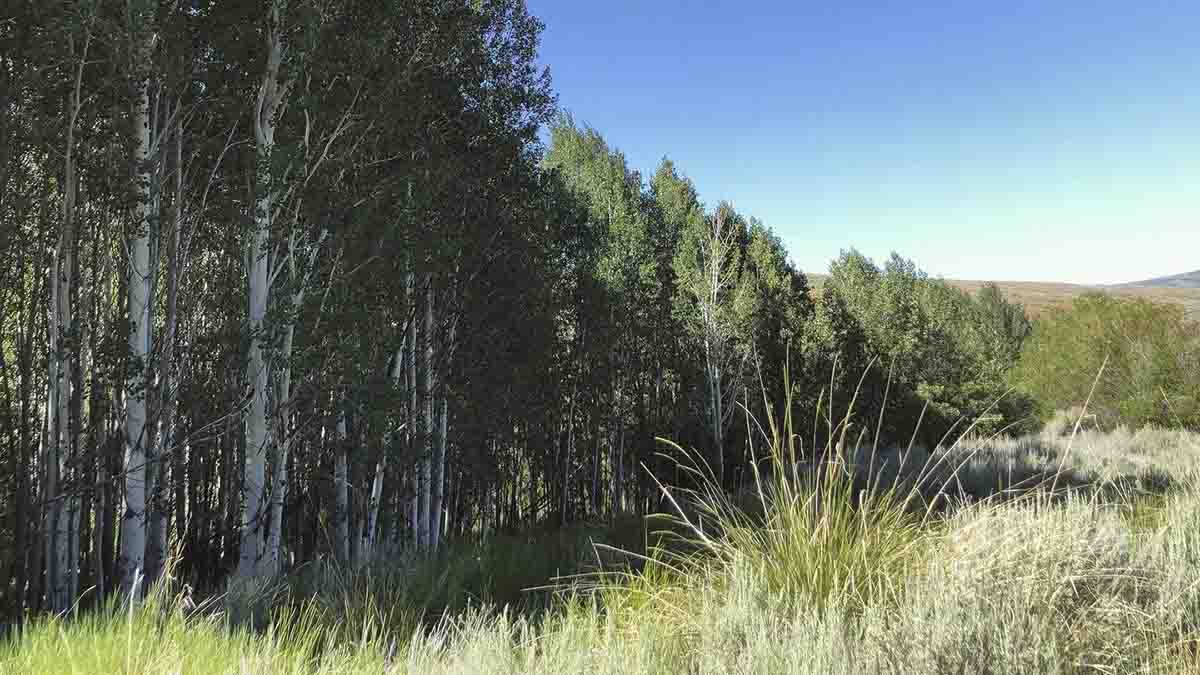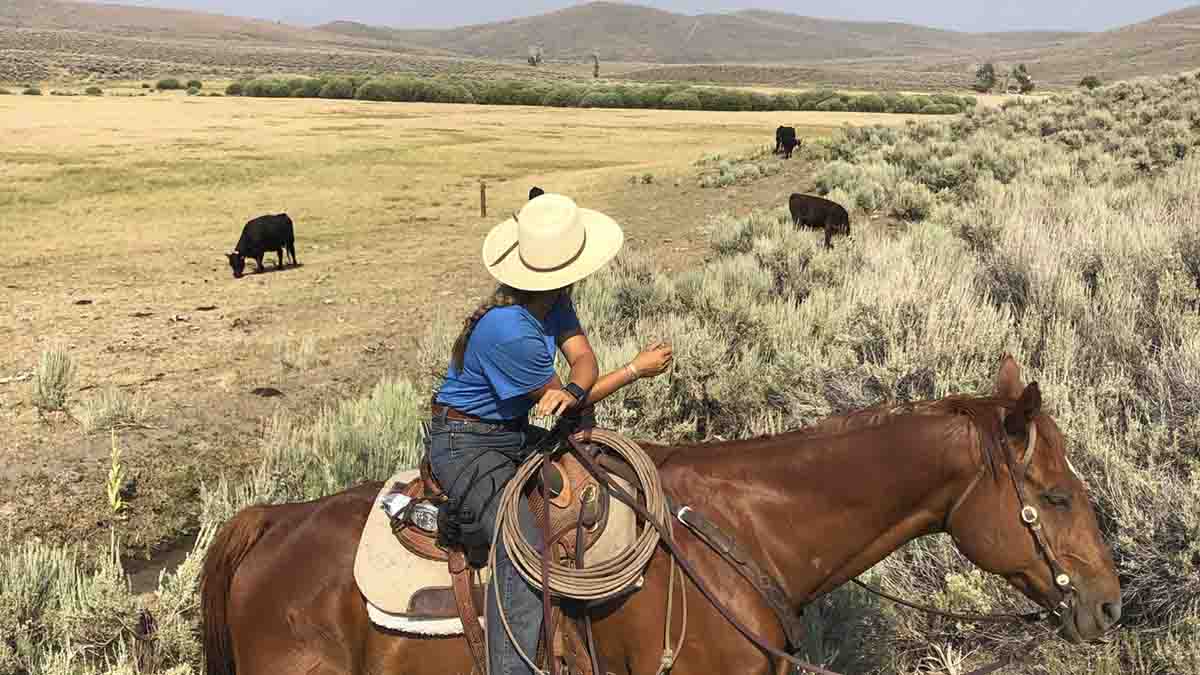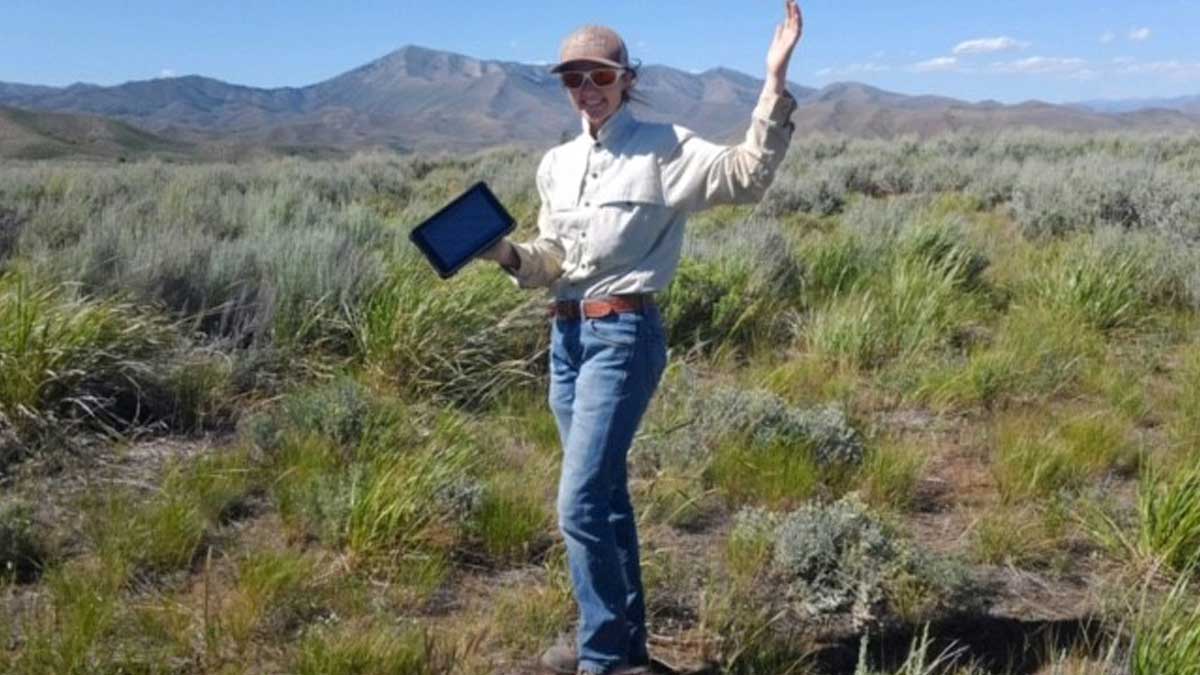Rinker Rock Creek Ranch on the Grid
Improvements Enhance Immersive Ranchland Research Experiences
Located in the Wood River Valley of central Idaho, University of Idaho’s 10,400-acre Rinker Rock Creek Ranch (RRCR) will receive a $1.34 million grant, which was appropriated by Idaho Congressman Mike Simpson. The congressional funding will expand educational opportunities in rangeland management, animal science and conservation.
The grant enhances hands-on learning for U of I students, faculty, the public, and postsecondary and K-12 groups, all while preserving the size and ecological diversity of RRCR.
The funding will give us a much-needed infusion to take our research capacity to the next level and continue to improve our ability to grow education and outreach programs.Cameron Weskamp, operations manager of Rinker Rock Creek Ranch
“The funding will give us a much-needed infusion to take our research capacity to the next level and continue to improve our ability to grow education and outreach programs,” said Cameron Weskamp, operations manager of RRCR.
Improvements include the purchase of scientific equipment to facilitate research for cattle management, livestock grazing, water quantity and quality conservation, greater sage-grouse management, and techniques to combat invasive annual grasses and associated wildfire.
“We’ll be investing in equipment including a new truck, and new ATVs [all-terrain vehicles] to help us meet the needs of the researchers and students as they come to the property to work and learn,” Weskamp said.
Additionally, essential facility improvements will provide space for research demonstrations, including reinforcing an existing barn to create an indoor, powered space to be utilized as a classroom, office and meeting space. Telecommunications systems and satellite internet will be installed to further facilitate classroom connectivity and research training.
“A lack of infrastructure and service poses challenges when you need to house researchers,” said Tracey Johnson, assistant professor in the Department of Fish and Wildlife Sciences and director of research at RRCR.
Sage-grouse research, for example, requires at least three researchers staying on RRCR for several months.
“Having researchers living in tents in late summer with no indoor place to shelter is dangerous when wildfire creates smokey conditions,” Johnson said. “This funding will provide a safe space to stay and do lab work, and researchers will benefit from having digital resources at any time.”


Creating a Home Base
Georgia Harrison, a doctoral student from the Department of Plant Sciences in the College of Agricultural and Life Sciences, will benefit from the improvements as she continues to assess resiliency of the native sagebrush plant community. Harrison also researches wildfire risk and behavior in sagebrush ecosystems at RRCR.
“It’s been great to have this large, pristine place with intact systems to work in,” Harrison said. “My study area is about 80 acres, half of which we treat with herbicide, and the other half we don’t. There is great diversity in the plant communities and terrain.”
Harrison also enjoys staying at RRCR during the summer.
“It’s important to have a home base and a sense of community with the other researchers and managers,” she said.
By working with others at RRCR, Harrison is undertaking interdisciplinary research.
“We have a research center so it’s easy to extend and add other people to a project,” Harrison said. “For example, I’m adding sampling with drones to my project, which I wouldn’t be able to do without the collaborative nature of the Ranch.”
Harrison enjoys field work, especially with field technicians and undergraduates.
“There are many different research opportunities for fellow students to experience, which is powerful because there’s a lot of diversity in the paths we want to explore,” Harrison said.
Harrison believes facility improvements will support easier access and living conditions while preserving the culture and experience of RRCR.
“Right now, life at camp is good but a little rugged. Any improvement will go a long way,” Harrison said.
The congressional funding will also support students and their work, especially in establishing longer-term research and education projects, offering additional field opportunities for multigenerational research.
“It is always good to have more than one or two years of data,” Harrison said.



Welcoming All Students
Hadley Dotts, a junior rangeland conservation major, is excited about the RRCR’s forthcoming investments. Dotts was a cattle production and range management environmental intern there in Summer 2021.
“I was interested in animal sciences and the production side of the rangeland, but I didn’t have enough experience to do that on my own,” Dotts said. “Instead of it taking several years to get that experience, I got to do it all in one summer.”
It was great to have a welcoming place where I could not be afraid to ask questions and learn.Hadley Dotts, junior majoring in rangeland conservation
Dotts worked with public land agencies and collaborated with researchers, all of whom had different types of careers.
“My favorite part was seeing every aspect of the whole operation,” Dotts said. “I began open minded, so it was great to have a welcoming place where I could not be afraid to ask questions and learn.”

A Tradition of Beautiful, Remote Learning
Anastasie Echeverria, a senior majoring in rangeland conservation and forestry who interned at RRCR in Summer 2020, also raves about her experiences.
“I worked with Kenny Randall, a master’s student in the Department of Fish and Wildlife Sciences, to research the effects of cattle grazing on sage-grouse habitat,” Echeverria said.
“I helped monitor the pastures before and after grazing, maintained temporary fencing and moved cattle.”
Echeverria also checked and recorded information from public recreation access logs, did riparian work including constructing beaver dam analogs, and learned irrigation techniques with head cattle manager Wyatt Prescott.
“I mapped, identified and sprayed weeds. I managed equipment including a boom sprayer, an ATV, four-wheelers and trailers,” Echeverria said. “I helped manage the Ranch as a whole, including the tents and property around ‘Cow Camp.’”
By upgrading the historic barn, which is centrally located on RRCR, the congressional funding will create a central and established home base for RRCR.
“Ranch life is sometimes harder for others because our camp doesn’t have electricity, service or running water,” Dotts said. “The development is awesome to hear about because it will make the Ranch even more welcoming.”
Johnson advocates for Harrison, Dotts, Echeverria and countless other students.
“It’s a beautiful place, we just don’t have much built,” Johnson said. “This funding will propel us into a future where we can leverage resources and preserve the Ranch.”
I love the area; it’s beautiful. I’m happy that the University of Idaho will continue to protect and not subdivide the land.Anastasie Echeverria, senior majoring in rangeland conservation and forestry
Preservation is a priority for the funding’s improvements.
“I love the area; it’s beautiful,” Echeverria said. “I’m happy that U of I will continue to protect and not subdivide the land. You either love it or hate it, but either way, people can continue to learn a lot.”

This project was funded by U.S. Office of Education under award P116Z220065. The total project funding is $1,325,000, of which 100% is the federal share.
Article by Kelsey Evens, College of Letters, Arts and Social Sciences.
Photos by University of Idaho Creative Services, Tracey Johnson, Georgia Harrison, Hadley Dotts and Anastasie Echeverria.
Published in October 2022.







